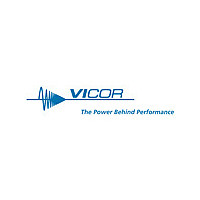vi-armb-c123 Vicor Corporation, vi-armb-c123 Datasheet - Page 7

vi-armb-c123
Manufacturer Part Number
vi-armb-c123
Description
Autoranging Rectifier Modules Up To 1500 Watts
Manufacturer
Vicor Corporation
Datasheet
1.VI-ARMB-C123.pdf
(11 pages)
Figure 11 — Enable (EN) function; See Fig.8 for details
Figure 12 — Bus OK (B OK) isolated power status indicator
Figure 13 — Filter connections
Vicor Corp. Tel: 800-735-6200, 978-470-2900 Fax: 978-475-6715
GND
L2/N
Low power filter
connections
High power filter
connections
L1
L2/N
GND
L1
N
ST
L
N
ST
L
F1
F1
Z1
Z1
controller
controller
Micro-
Micro-
C1
C1
15 Vdc
15 Vdc
R1
R2
R1
L1
L2
L1
R3
BOK
BOK
EN
EN
+V
–V
+V
–V
Part
L1,L4
L2, L3
C1
C2,C3,C4,C5
C6
R1
R2
F1
Z1
Not used with VI-260/VI-J60
L2
R2
L3
To additional modules
To additional modules
Part
C1
C2, C3
C4
F1
L1, L2
L3
R1, R2
R3
R4
Z1
L3
C3
C2
+5 Vdc
Set your site on VICOR at vicorpower.com
Description
1,000 µH 12 A / 6.5 MΩ
22 µH
0.68 µF (X type)
4700pF (Y2 type)
0.22 µF (X type)
390 kΩ 1/2 W
10 Ω 1/2 W
15 A Max
MOV
Description
1.0 µF
4700pF (Y2 type)
0.15µF
10 A Max
27 µH
1.3 mH
10 Ω
150 kΩ, 0.5 W
2.2 Ω
MOV
L4
Secondary
referenced
C2
C3
C5
C4
R4
C4
Vicor Part Number
02573
29764
03269
05147
32012
32006
30076
Vicor Part Number
31743
29764
02573
03285
04068
30076
C6
+IN
PC
PR
–IN
+IN
PC (GATE IN)
PR
–IN
Converter
Converter
N
ST
L
N
ST
L
DC-DC
DC-DC
Vicor
Vicor
C
C
ARM, Autoranging Rectifier Module
intended to provide early-warning power fail information
and is also referenced to the negative output pin.
power VI-ARM-x1 and high power VI-ARMB-x2 (See Fig. 13).
Both filter configurations provide sufficient common mode and
differential mode insertion loss in the frequency range between
100 kHz and 30 MHz to comply with the Level B conducted
emissions limit.
determined according to output bus voltage ripple, power fail
hold-up time, and ride-through time. (See Fig. 14). Many
applications require the power supply to maintain output
regulation during a momentary power failure of specified
duration, i.e., the converters must hold-up or ride-through such
an event while maintaining undisturbed output voltage
regulation. Similarly, many of these same systems require
notification of an impending power failure in order to allow time
to perform an orderly shutdown.
The energy stored on a capacitor which has been charged to
voltage V is:
Energy is given up by the capacitors as they are discharged by
the converters. The energy expended (the power-time product)
is:
Rearranging equation 2 to solve for the required capacitance:
Caution: There is no input-to-output isolation in the
ARM. It is necessary to monitor Bus-OK via an
optoisolator if it is to be used on the secondary (output)
side of the converters. A line isolation transformer
should be used when performing scope measurements.
Scope probes should never be applied simultaneously to
the input and output as this will destroy the module.
Two input filter recommendations are shown for low
Where:
Where:
V
V
Δt = discharge interval
V = voltage across the capacitor
C = capacitance
C = 2PΔt / (V
ε
ε
ε
P = operating power
1
2
= 1/2(CV
= stored energy
= PΔt = C(V
= capacitor voltage at the beginning of Δt
= capacitor voltage at the end of Δt
Hold-up capacitor values should be
(See Fig. 12). The Bus-OK pin is
2
)
1
2
1
–V
2
–V
2
2
2
)
2
) / 2
Rev. 3.8
Page 7 of 11
(1)
(2)
(3)











